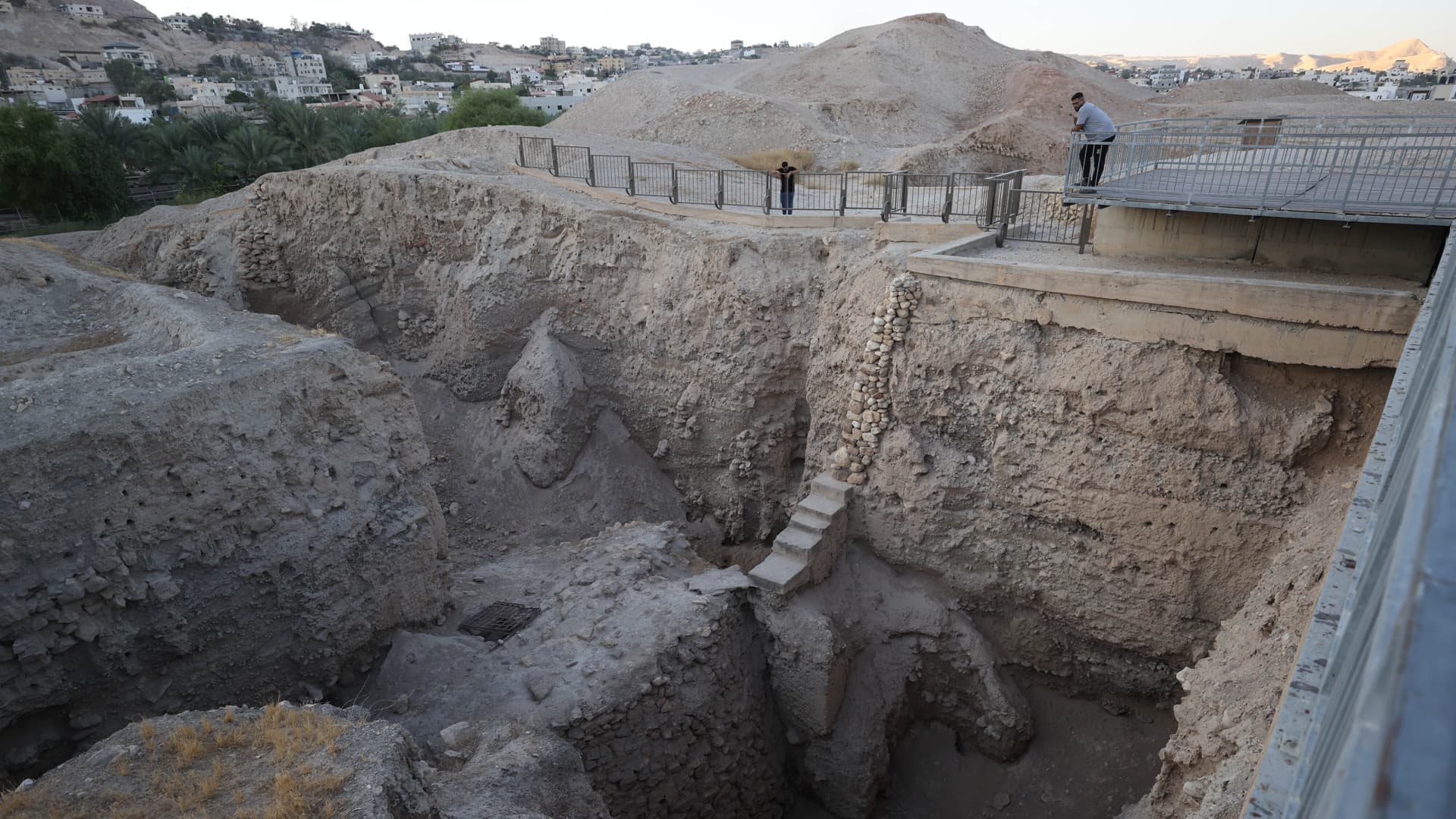Products You May Like
The World Heritage Committee has named 37 new sites to UNESCO’s World Heritage List — including one in Israeli-occupied West Bank.
The newly inscribed properties were announced during the 45th session of the World Heritage Committee being held from Sept. 10 to 25 in Riyadh, Saudi Arabia.
Of the 50 “candidate sites” being considered, these have made the list thus far:
- Cultural Landscape of Old Tea Forests of the Jingmai Mountain in Pu’er, China
- Deer Stone Monuments and Related Bronze Age Sites, Mongolia
- Gaya Tumuli, South Korea
- Gordion, Turkey
- Jewish-Medieval Heritage of Erfurt, Germany
- Koh Ker, Cambodia
- Modernist Kaunas, Lithuania
- National Archaeological Park Tak’alik Ab’aj, Guatemala
- Old town of Kuldiga, Latvia
- Prehistoric sites of Talayotic Menorca, Spain
- Santiniketan, India
- Silk Roads: Zarafshan-Karakum Corridor in Tajikistan, Turkmenistan, Uzbekistan
- The Gedeo Cultural Landscape, Ethiopia
- The Persian Caravanserai, Iran
- Tr’ondek-Klondike, Canada
- Viking-Age Ring Fortresses, Denmark
- Zatec and the Landscape of Saaz Hops, Czechia
- Forest Massif of Odzala-Kokoua, Congo
- Volcanoes and Forests of Mount Pelee and the Pitons of Northern Martinique, France
- Ancient Jericho/Tell es-Sultan, West Bank
- Astronomical Observatories of Kazan Federal University, Russia
- Khinalig People and “Koç Yolu” Transhumance Route, Azerbaijan
- Djerba, Tunisia
- Sacred Ensembles of the Hoysalas, India
- Yogyakarta and its Historic Landmarks, Indonesia
- The Maison Carrée of Nimes, France
- Bale Mountains National Park, Ethiopia
- ESMA Museum and Site of Memory – Former Clandestine Center of Detention, Torture and Extermination, Argentina
- Eisinga Planetarium in Franeker, Netherlands
- Hopewell Ceremonial Earthworks, U.S.
- Jodensavanne Archaeological Site: Jodensavanne Settlement and Cassipora Creek Cemetery, Suriname
- The Ancient Town of Si Thep, Thailand
- Wooden Hypostyle Mosques of Medieval Anatolia, Turkey
- Zagori Cultural Landscape, Greece
- Anticosti, Canada
- Evaporitic Karst and Caves of Northern Apennines, Italy
- Nyungwe National Park, Rwanda
A 4th — or 5th — site?
The ancient city of Tell es-Sultan — or Jericho in Hebrew — is the fourth site in the West Bank to make UNESCO’s list, according to UNESCO’s website, joining:
- Birthplace of Jesus: Church of the Nativity and the Pilgrimage Route, Bethlehem
- Hebron/Al-Khalil Old Town
- Land of Olives and Vines, Southern Jerusalem, Battir
The West Bank site — thought to be one of the oldest fortified cities in the world — dates to the 9th millennium B.C. and is marked by an oval-shaped tell, or mound, near the modern city of Jericho.
But Mounir Anastas, permanent delegate of Palestine to UNESCO, stated that Jericho marks the fifth site in the territory named to the list, the most important from a historical and religious perspective being the Old City of Jerusalem, according to an announcement on Sunday by the Saudi Press Agency.
The Old City of Jerusalem and its walls were inscribed on the UNESCO World Heritage List in 1981, but UNESCO doesn’t list it under Israel or Palestine. Whereas other sites are listed by country, UNESCO lists the site separately, under “Jerusalem (Site proposed by Jordan).”
Israel, which joined UNESCO in 1949, has nine sites named to the list, including Masada, the Old City of Acre and the “White City” of Tel Aviv.
A backdrop of political alliances
UNESCO’s decision to add Tell es-Sultan/Jericho to its World Heritage Site has angered Israeli officials, with Israel’s foreign ministry releasing a statement Sunday calling it a “cynical” ploy by the Palestinians to politicize UNESCO.
Anastas credited “all Arabs, especially the Kingdom of Saudi Arabia, which made every effort to host the session and spared no effort to support the Palestinian cause in all international platforms,” according to the Saudi Press Agency.
Saudi Arabia’s sympathetic view of the Palestinians has been shaped by the 1948 Arab-Israeli war. Saudi Arabia does not recognize Israel as a state and has refused to do so since the latter’s independence in 1948. Additionally, two of Islam’s holiest sites, Mecca and Medina, are also in Saudi Arabia, giving it a crucial role in the Muslim world when it comes to the issue of Palestine’s statehood.
Read more
Saudi Arabia told the U.S. Biden administration Sunday of its decision to freeze efforts to normalize relations with Israel. According to the Saudi-owned newspaper Elaph, an Israeli official had attributed the suspension to the Israeli government’s unwillingness to make any concessions to the Palestinians.
The United States stopped funding UNESCO after it recognized Palestine as a member in 2011. In December 2018, the United States, along with Israel, left UNESCO, alleging anti-Israeli bias at the agency.
In June, UNESCO announced that the U.S. planned to rejoin UNESCO — and pay more than $600 million in back dues — in an effort to counter-balance Chinese influence in the agency.
Two sites in Ukraine ‘in danger’
On Friday, the World Heritage Committee inscribed two sites in Ukraine to its List of World Heritage in Danger:
- The Saint Sophia Cathedral and Lavra of Kyiv-Pechersk (Kyiv Monastery of the Caves)
- The historic center of the city of Lviv
The committee noted both have been under permanent threat since the start of the Russian invasion despite “the many actions taken by the Ukrainian authorities to protect their cultural property,” according to UNESCO.
“Their inclusion on the List of World Heritage in Danger reminds the 195 States parties to the Convention of their responsibility to monitor and contribute to the protection of these sites,” UNESCO stated.
The two sites join the historic center of the city of Odesa — named in January — to UNESCO’s “in danger” list.
